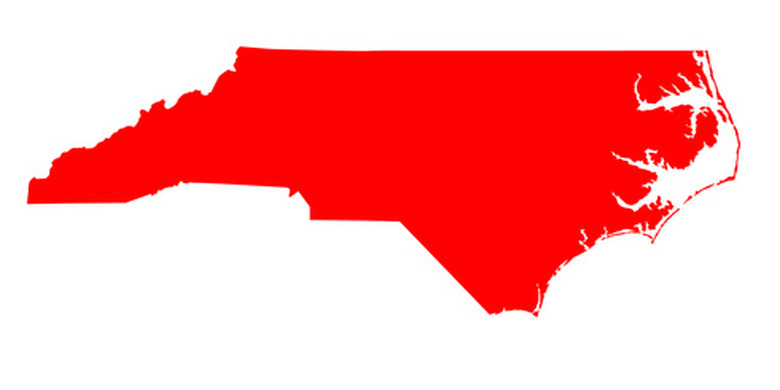Facts About Owls In North Carolina
From the high crest of the Southern Appalachian Mountains out to the capes and barrier islands of the Atlantic coast, there are owls that call every corner of North Carolina's diverse geography home. These birds of prey – primarily but not exclusively nocturnal – perform critical roles in the state's ecosystems as hunters of small to mid-sized critters, and also tend to impress human observers with their big, bold eyes, magnificent talons and ghostly, silent flight. Several species in the Tar Heel State are common, widespread and fairly easily detected with a little effort; others are much harder to spot or are rarely found in North Carolina.
Widespread and Commonly Observed North Carolina Owls
Widespread and Commonly Observed North Carolina Owls
Three species of native owls in North Carolina cover much of the state and are, on the whole, pretty abundant: the Great Horned Owl, the Eastern Screech Owl and the Barred Owl. The Great Horned Owl – sometimes called the "tiger owl" for its fierceness or "hoot owl" for its deep voice – ranks as North Carolina's biggest resident owl and sits right on top of the woodland food web. Using its size, power and stealth, this owl will prey on everything from mice and lizards to skunks, cottontails, grouse and even other raptors (its owl cousins very much included). Great Horned Owls rule over a great variety of habitats, and it's not unusual to see them on the prowl even in suburban neighborhoods and city parks.
The Eastern Screech Owl, which favors pine and mixed pine-hardwood forests, is much smaller than the Great Horned Owl, looking something like a miniature version of it with its "ear" tufts and large eyes. Both the Great Horned Owl and Eastern Screech Owl nest in every county in North Carolina. Eastern Screech Owls come in two color morphs, sporting either gray or reddish plumage.
The round-headed Barred Owl sits midway on the size spectrum between the screech owl and the great horned, and looks quite different with its lack of ear tufts and dark eyes. Barred Owls are most often associated with swamps and bottomland or floodplain forests in the Coastal Plain and the Piedmont. They can occasionally be found up in dense mountain woods as well, including the spruce-fir stands of the highest Appalachian ridges and peaks.
Rarer or Harder-to-Find North Carolina Owls
Rarer or Harder-to-Find North Carolina Owls
The littlest of North Carolina's owls is the Northern Saw-whet Owl, which isn't necessarily uncommon but less widespread than the owls covered so far and fond of somewhat out-of-the-way digs. These tiny owls nest in spruce-fir stands and other upper-elevation Appalachian forests.
The pale-faced, downright spectral-looking Barn Owl has declined significantly in much of North Carolina, though conservation efforts are underway. Historically, at least, it was a fairly widespread denizen of open or semi-open landscapes from the foothills to the coast; as its name suggests, the Barn Owl often flourishes in farmland.
A number of uncommon owls may visit North Carolina in the colder months. The Long-eared Owl, skinny with extravagant ear tufts, winters to some degree in the state but is rarely seen, not least because of its habit of roosting deep within conifer boughs. Wintering Short-eared Owls are a bit easier to track down, particularly on the Coastal Plain; these agile, long-winged owls hunt over open fields and marshes, occasionally during broad daylight.
Finally, the mighty Snowy Owl, a big Arctic hunter about the size of a Great Horned Owl that sometimes drifts well south in winter, very occasionally shows up in North Carolina this time of year, invariably drawing a lot of attention from eager birdwatchers when it does.
Understanding Owls in the Ecosystem
Understanding Owls in the Ecosystem
All owls are predators, though prey may range from insects up to the decent-sized mammals and birds that Great Horned Owls often target. Certain owls are so similar in their choice of prey and food web position as diurnal (active by day) raptors that they can be thought of as twilight or nighttime equivalents. For example, the Great Horned Owl occupies a similar niche (ecological role) as the Red-tailed Hawk, the Barred Owl as the Red-shouldered Hawk and the Short-eared Owl as the Northern Harrier (or Marsh Hawk).
Owl Sounds in North Carolina
Owl Sounds in North Carolina
Owls are generally easier to detect by sound than by sight – not really surprising, given that most are active under cover of darkness. Daytime sightings are possible, however, especially if you key into commotion from crows or smaller songbirds, both of which will noisily harass, or "mob," roosted owls they come across. Owl sounds in North Carolina range from the husky hoots of the Great Horned Owl and the slightly hair-raising "Who-cooks-for-you? Who-cooks-for-you-aaalllll?" racket of the Barred Owl to the spooky whinnies of the Eastern Screech-owl and the raspy shriek of the Barn Owl.
Cite This Article
MLA
Shaw, Ethan. "Facts About Owls In North Carolina" sciencing.com, https://www.sciencing.com/facts-about-owls-in-north-carolina-13425268/. 30 September 2021.
APA
Shaw, Ethan. (2021, September 30). Facts About Owls In North Carolina. sciencing.com. Retrieved from https://www.sciencing.com/facts-about-owls-in-north-carolina-13425268/
Chicago
Shaw, Ethan. Facts About Owls In North Carolina last modified March 24, 2022. https://www.sciencing.com/facts-about-owls-in-north-carolina-13425268/
